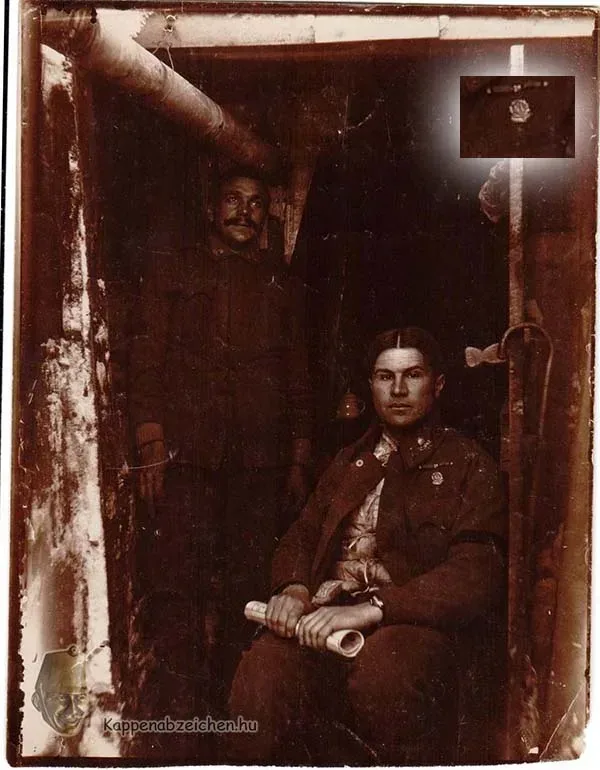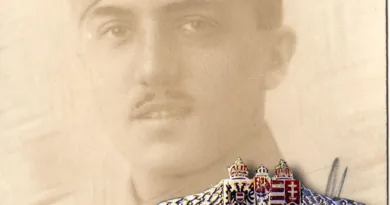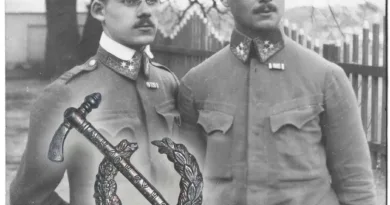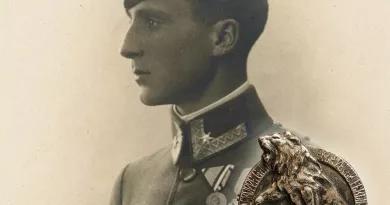VI Corps
Corps’ Kappenabzeichen were not too rare and there are a good number of them on wearing photos. The interesting thing about this post is the wearer, in addition to the badge, which is beautiful in its simplicity. He is none other than First Lieutenant Dr. Kálmán Pogány, the company commander of the 19th insurgent infantry regiment in Székesfehérvár. A doctor of arts, he was the director of the Museum of Fine Arts before the Great War. In the 1919 communist commune, he was the president of the Art and Museum Directorate and the head of the committee for socializing museal artefacts.

From 1914 to February 1916, the 19th Insurgent Infantry Regiment was deployed on the Serbian front and then on the Russian front. It was placed on the Italian battlefield from August 1917 until the end of the war. They were assigned to the 17th (later 127th) Insurgent Infantry Brigade, which was part of the 53rd Infantry Division (64th Division from June 1918). The regimental history describes the combat events in detail, but nowhere does it mention the VI. corps as a superior command. Wearing the badge is therefore strange.
According to the note on the back of the photograph, the picture was taken at a company commander’s position in South Tyrol. This could be possible, since the regiment fought on the Italian front, but first on the Karst plateu and then on the middle course of the Piave, so not in Tyrol. Based on the description, the VIII. Kaposvár battalion of the 19th insurgents could be his battalion. This was originally the insurgent supply battalion of the 19th regiment, but during the war it developed into a unit performing combat tasks. Its commander was the retired hussar major István Szegfy. From June 1916 to September 1917, they were deployed in the front section of the Italian front around Zugna Torta. They were then transferred to Transylvania, from where they returned to the Italian front in April 1918. Yet, this unit had no ties to the VI. to corps either, the puzzle remains unsolved…




